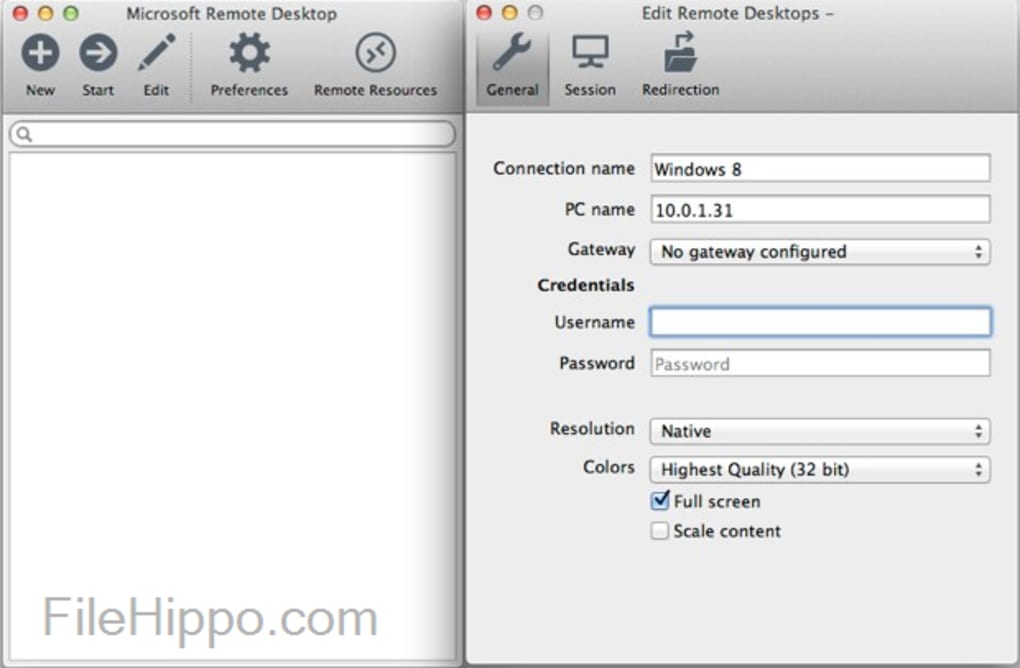

You should see the eToken with your name listed there. To test the availability of the X.509 certificate on the eToken to the remote end, open Safenet Authentication Client on the remote server.Select the proper profile to connect to remote server.click + and then click Desktop to create a new remote connection.
MICROSOFT REMOTE DESKTOP CONNECTION CLIENT FOR MAC LATEST VERSION INSTALL
Start the Remote Desktop Client (RDC client on Windows, Microsoft Remote Desktop 10 on MacOS, Remmina Remote Desktop Client on Linux) On your Mac download and install the Microsoft Remote Desktop client for Macs using. Plug in the eToken on the local desktop.  Under Advanced tab, check the chekbox for Share smartcard and save. Under Basic tab, fill in the Server (hostname/IP address of the remote server/desktop), Username and Password (account to access the remote server/desktop). Create a new connection profile for RDP. Under Devices & Audio tab, check the checkbox for Smart cards and save. Fill in the PC name (hostname of the remote desktop) and User account (account to access the remote server/desktop). Open Microsoft Remote Desktop 10, add a PC profile. Check the checkbox for Smart cards and save. Under Local Resources tab, click on “More”. Open Remote Desktop Connection Client, click on show options. MacOS: Microsoft Remote Desktop 10 (downloadable from App Store). Possession of eToken with UTORauth-issued certificate and a current version of the SafeNet client installed on local and remote Windows hosts.
Under Advanced tab, check the chekbox for Share smartcard and save. Under Basic tab, fill in the Server (hostname/IP address of the remote server/desktop), Username and Password (account to access the remote server/desktop). Create a new connection profile for RDP. Under Devices & Audio tab, check the checkbox for Smart cards and save. Fill in the PC name (hostname of the remote desktop) and User account (account to access the remote server/desktop). Open Microsoft Remote Desktop 10, add a PC profile. Check the checkbox for Smart cards and save. Under Local Resources tab, click on “More”. Open Remote Desktop Connection Client, click on show options. MacOS: Microsoft Remote Desktop 10 (downloadable from App Store). Possession of eToken with UTORauth-issued certificate and a current version of the SafeNet client installed on local and remote Windows hosts. 
The RDP client ‘forwards’ the local eToken connection to the remote machine so that applications on the remote desktop/server that require eToken authentication can be used. A typical use case is when a user connects from home (Windows/MacOS/Linux) to their office computer (remote Windows desktop/server). The Remote Desktop client supports the use of smartcards (eToken).







 0 kommentar(er)
0 kommentar(er)
